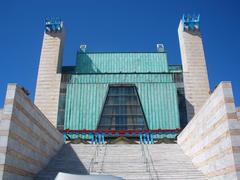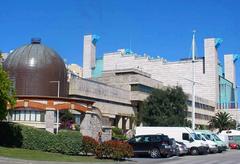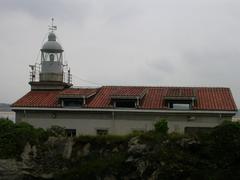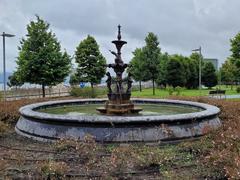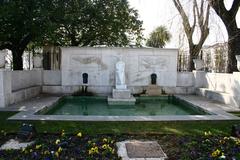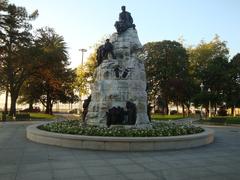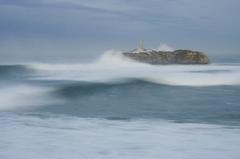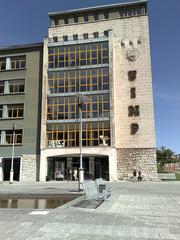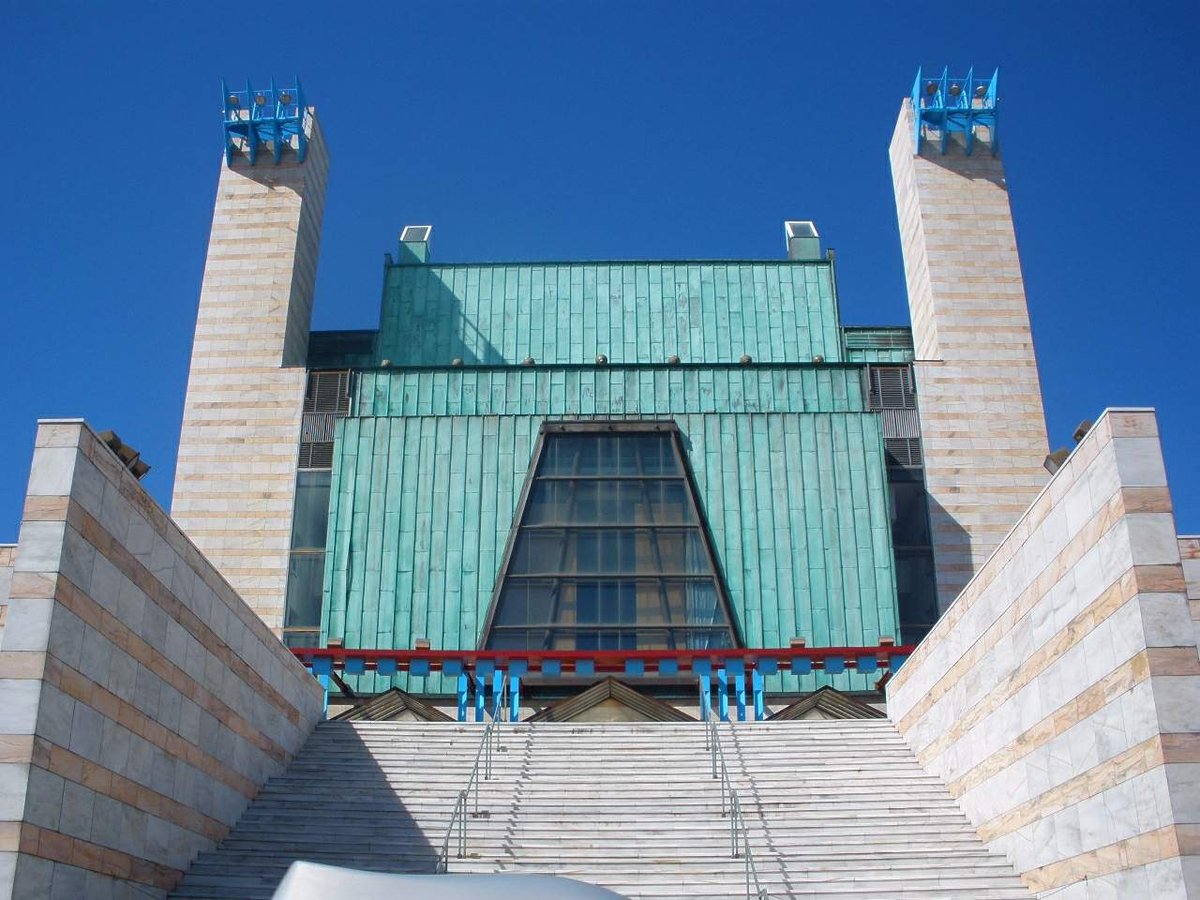
La Duna Visiting Hours, Tickets, and Historical Sites in Santander, Spain
Publication Date: 19/07/2024
Introduction to La Duna
La Duna, nestled in the picturesque coastal region of Santander, Spain, is a site that seamlessly blends historical significance, natural beauty, and cultural charm. From its origins in prehistoric times to its status as a modern-day tourist attraction, La Duna captures the essence of Santander’s rich heritage. Visitors are drawn to La Duna for its stunning landscapes and deep historical roots that span several centuries. The area has been a focal point for various civilizations, including early human settlers during the Paleolithic era, Romans, and medieval maritime traders. Each epoch has left its mark, creating a tapestry of history that is as fascinating as it is diverse. Today, La Duna is a vibrant part of Santander, attracting tourists with its historical landmarks, cultural festivals, and breathtaking natural scenery. Whether you’re a history enthusiast, nature lover, or cultural explorer, La Duna offers something for everyone. For more detailed information on its history, visitor tips, and nearby attractions, continue reading this comprehensive guide (Santander Tourism, UNESCO).
Contents Overview
- Introduction
- History of La Duna
- Early Settlement and Prehistoric Significance
- Roman Influence
- Medieval Era and the Rise of Santander
- The Age of Exploration
- Industrial Revolution and Modernization
- 20th Century - War and Reconstruction
- Contemporary La Duna
- Visitor Information
- Visiting Hours and Tickets
- Travel Tips
- Nearby Attractions
- Accessibility
- Special Features
- Guided Tours
- Photographic Spots
- Special Events
- Visuals and Media
- FAQ
- Conclusion
Exploring La Duna - History, Visiting Hours, Tickets, and More
History of La Duna
Early Settlement and Prehistoric Significance
La Duna has a rich history dating back to prehistoric times. Archaeological evidence suggests that the area was inhabited by early humans during the Paleolithic era. The discovery of ancient tools and cave paintings in nearby regions, such as the famous Altamira Cave, indicates that early settlers were drawn to this area due to its favorable climate and abundant resources (UNESCO).
Roman Influence
During the Roman period, La Duna and the surrounding region of Cantabria were integrated into the Roman Empire. The Romans established settlements and infrastructure, including roads and aqueducts, which facilitated trade and communication. The remnants of Roman architecture and artifacts found in the area provide insights into the daily lives of the inhabitants and their interactions with the broader Roman world (Roman Spain).
Medieval Era and the Rise of Santander
In the medieval period, La Duna became part of the Kingdom of Castile. The strategic location of Santander, with its natural harbor, made it an important center for maritime trade and defense. The construction of fortifications and the establishment of monasteries and churches during this time reflect the growing significance of the region. Notably, the Monastery of Santa María de Puerto, founded in the 12th century, played a crucial role in the religious and cultural life of the area (Santander History).
The Age of Exploration
The Age of Exploration in the 15th and 16th centuries marked a period of significant growth and development for La Duna and Santander. The port of Santander became a vital hub for expeditions to the New World. The wealth generated from trade and exploration led to the construction of grand buildings and the expansion of the city. This era also saw the rise of prominent local families who played key roles in the administration and economic activities of the region (Age of Exploration).
Industrial Revolution and Modernization
The 19th century brought about profound changes with the advent of the Industrial Revolution. Santander, including La Duna, experienced rapid industrialization and urbanization. The development of industries such as shipbuilding, fishing, and manufacturing transformed the local economy. The construction of railways and improved transportation networks further integrated the region into the national and global economy. This period also saw significant social changes, with the growth of the working class and the emergence of labor movements (Industrial Revolution).
20th Century - War and Reconstruction
The 20th century was marked by both turmoil and resilience for La Duna. The Spanish Civil War (1936-1939) had a profound impact on the region, leading to destruction and loss. However, the post-war period saw efforts to rebuild and modernize. The reconstruction of infrastructure and the promotion of tourism became key priorities. The natural beauty of La Duna and its historical significance attracted visitors, contributing to the economic recovery of the area (Spanish Civil War).
Contemporary La Duna
Today, La Duna is a vibrant part of Santander, blending its rich historical heritage with modern amenities. The area is known for its picturesque landscapes, cultural festivals, and historical landmarks. Efforts to preserve and promote the historical sites, such as the restoration of ancient buildings and the establishment of museums, have made La Duna a popular destination for tourists and history enthusiasts alike (Santander Tourism).
Visitor Information
Visiting Hours and Tickets
La Duna is open to visitors year-round. Specific visiting hours and ticket prices can vary depending on the season and specific attractions within the area. It is recommended to check the official website or contact the local tourist information center for the most up-to-date information.
Travel Tips
- Getting There: La Duna is easily accessible by car, bus, and train. Santander Airport is the nearest airport, located just a short drive away.
- Best Time to Visit: The best time to visit La Duna is during the spring and fall when the weather is mild, and the tourist crowds are smaller.
- Accommodation: There are various accommodation options available in and around Santander, ranging from budget-friendly hostels to luxury hotels.
Nearby Attractions
- Santander Cathedral: A stunning example of Gothic architecture, located in the heart of Santander.
- El Sardinero Beach: A popular beach destination known for its beautiful sandy shores and vibrant atmosphere.
- Palacio de la Magdalena: A historic palace offering guided tours and panoramic views of the coastline.
Accessibility
La Duna is committed to making its attractions accessible to all visitors. Most historical sites and tourist attractions are equipped with ramps, elevators, and other facilities to accommodate visitors with mobility challenges.
Special Features
Guided Tours
Guided tours are available for those who want to delve deeper into the history and significance of La Duna. These tours are led by knowledgeable guides who provide fascinating insights and anecdotes about the area.
Photographic Spots
La Duna offers numerous scenic spots perfect for photography enthusiasts. Some of the most popular spots include the coastal cliffs, historical landmarks, and lush parks.
Special Events
Throughout the year, La Duna hosts a variety of cultural festivals, historical reenactments, and local events. These events provide a unique opportunity to experience the vibrant culture and traditions of the area.
Visuals and Media
[Insert high-quality images and videos of La Duna here. Ensure they are optimized for the web with appropriate alt tags.]
FAQ
Q: What are the visiting hours for La Duna? A: Visiting hours vary by season and specific attractions. Check the official website for the most current information.
Q: How much are tickets to visit La Duna? A: Ticket prices vary depending on the attractions and time of year. It is best to consult the official website or local tourist information center.
Q: Are guided tours available at La Duna? A: Yes, guided tours are available and highly recommended for a comprehensive understanding of the area’s history and significance.
Q: What is the best time to visit La Duna? A: The best time to visit is during the spring and fall when the weather is pleasant and the tourist crowds are smaller.
Q: Is La Duna accessible for visitors with disabilities? A: Yes, most attractions at La Duna are equipped with facilities to accommodate visitors with mobility challenges.
Conclusion
The history of La Duna is a testament to the enduring legacy of human settlement and cultural evolution. From its prehistoric roots to its modern-day significance, La Duna offers a fascinating glimpse into the past. Be sure to plan your visit to explore this remarkable area and take advantage of the guided tours and special events. Stay up to date by following us on social media and checking out our other related posts.
Sources and Further Reading
- Exploring La Duna - History, Visiting Hours, Tickets, and More
- Roman Spain
- Santander History
- Age of Exploration
- Industrial Revolution
- Spanish Civil War
- Santander Tourism
- Parque Natural de las Dunas de Liencres
- Playa de Valdearenas
- Monte Buciero
- Palacio de la Magdalena
- Centro Botín
- Cabárceno Natural Park
- Altamira Caves
